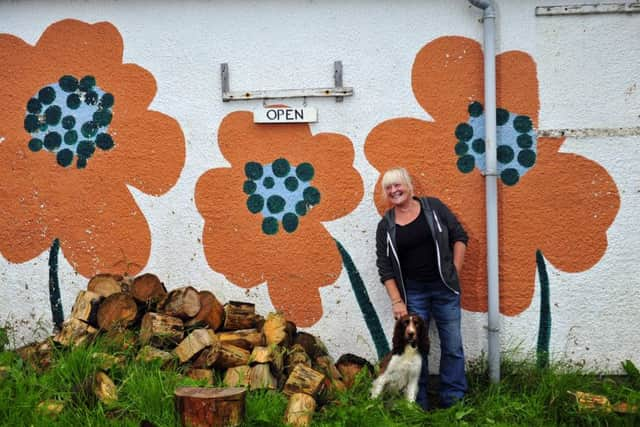5 alternative communities of Scotland


Scoraig, Wester Ross
Scoraig was founded in the late 1960s by the late Alan Bush who placed an advert in a number of newspapers to attract new residents to the remote settlement.
Now home to around 80 residents, Scoraig is regarded as Scotland’s first truly off-grid community where homes are powered solely by wind and solar power.


Advertisement
Hide AdAdvertisement
Hide AdIndeed, the need for energy on this remote peninsula has left to some of its residents becoming true innovators of green energy with the island this month hosting a festival of alternative power.
Accessible by boat across Little Loch Broom - or a five mile walk from the road end - a focal point of the settlement is the primary school, which five children attend. Older children go to Ullapool for lessons and stay in a hostel during the week.
Scoraig is on land owned by Lady Jane Rice, the estranged spouse of lyricist Sir Tim Rice.


Erraid Island, Inner Hebrides
Around eight people live full-time on Erraid, a tiny island off Mull, which was the inspiration for Robert Louis Stevenson’s Kidnapped.
The writer’s family built the lighthouse on Erraid and residents now live in the old keeper’s cottages.
Residents live close to nature on Erraid, where rainwater is drunk, peat water used for washing and outdoor compost toilets are standard.


Visitors are invited to Erraid for stays of up to three months with guests held in the “ancient energy” of the island.
Advertisement
Hide AdAdvertisement
Hide AdGuests are invited to cook, chop wood, work in the gardens, help with the animals, make candles, meditate and sing sacred songs.
Erraid was bought by the Van der Sluis family from The Netherlands in the late 1970s and the Findhorn Foundation, which runs a long-established spiritual retreat on the Moray coast, acts as caretaker of the land for 11 months of the year.


Laurieston Hall, Castle Douglas, Dumfries and Galloway
This retreat has been running since 1972 with 18 adults living in a huge Victorian villa and the 135 acres of land that surround it. It is not uncommon for people to live at Laurieston for 20 years or more.
Rent is largely paid at the retreat by unwaged labour with residents working on various committees - such as gardening, finance and dairy - for two-and-a-half days a week.
Large volumes of fruit and vegetables are grown with animals also reared. A small shop also runs on site and a hydro scheme supplies much of its electricity.
Around 70 people a week attend creative and spiritual events at the People Centre, which helps sustain the enterprise although residents are taking a break from hosting activities for 2017.
Life is lived as a co-operative at Laurieston Hall with weekly meetings held to organise its day-to day running and iron out any disagreements.
Balkaneil Craft Village, near Durness, Sutherland
Advertisement
Hide AdAdvertisement
Hide AdBalkaneil was built in the 1950s as a MOD early warning station in the event of a nuclear attack. However, it was never used for its intended purpose and in the 1960s became a “cradle of creatvity” that drew people from all over the UK to live and work in the country’s most north-westerly community.
Advertisements were placed in national newspapers offering buildings for minimal rent to those who had skills and viable business plans with its first residents faced with empty concrete shells with no plumbing and electricity.
A coffee shop, pottery and the first commercial transport to Cape Wrath were instigated by founder members Paul and Yvette Brown. More residents arrived at Balkaneil and Durness Primary School received a boost to its rolls.
Residents pressed Highland Regional Council for the opportunity to buy their properties with sales of 16 properties going through in 1980.
Balnakeil Craft Village was the first establishment of its kind in Britain. Today, businesses include a repair workshop for woodwind instruments and a chocolatier.
Monimail Tower Project, near Cupar, Fife
This community lives in the grounds of a 15th Century tower that was part of the palace inhabited by Cardinal Beaton, the Archbishop of St Andrews.
Its residents live on fresh fruit and vegetables grown in its walled garden and orchard. Fuel is reaped from its own woodland and volunteers are invited in to help with maintenance and planting.
Monimail runs as an environmental charity which focuses on sustainable and communal living.
A spokesman said: “We like to garden, play music, make stuff and generally have fun.”